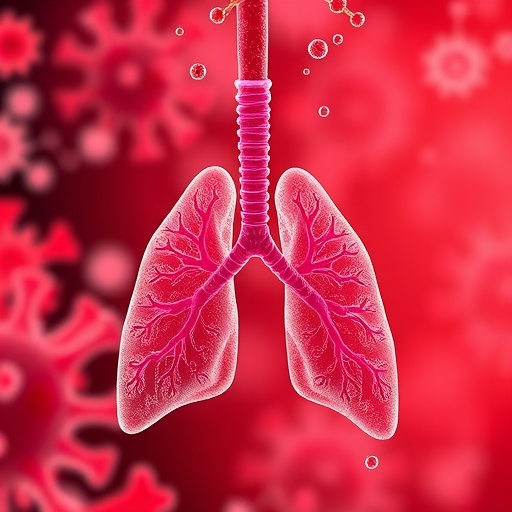Family history of liver disease significantly raises risk of severe alcohol-related hepatitis – News-Medical

Report on Familial Risk Factors in Alcohol-Associated Liver Disease and Implications for SDG 3
Introduction: Aligning Health Research with Global Goals
A study conducted by the Indiana University School of Medicine and Regenstrief Institute has identified a significant risk factor for alcohol-associated hepatitis, offering a critical tool for preventative healthcare. This report analyzes the study’s findings in the context of the United Nations Sustainable Development Goals (SDGs), specifically SDG 3: Good Health and Well-being. The research directly supports progress towards Target 3.4, which aims to reduce premature mortality from non-communicable diseases, and Target 3.5, which focuses on strengthening the prevention and treatment of substance abuse, including the harmful use of alcohol.
Key Research Findings
- Individuals with a parent who died from liver disease face more than double the risk of developing alcohol-associated hepatitis compared to other heavy drinkers without that family history.
- The specific risk marker is a parent’s mortality from liver disease, not merely a parental history of alcohol use disorder.
- Patients diagnosed with alcohol-associated hepatitis who also have this parental history exhibit a higher likelihood of mortality within 90 days of their diagnosis.
Contribution to Sustainable Development Goal 3: Good Health and Well-being
The study’s outcomes provide actionable intelligence for advancing global health targets:
- Target 3.4 (Non-Communicable Diseases): By identifying a clear, measurable risk marker, the research enables targeted prevention strategies. Early intervention and counseling for high-risk individuals can reduce alcohol consumption, thereby preventing the onset of a life-threatening non-communicable disease and reducing premature mortality.
- Target 3.5 (Substance Abuse): The findings strengthen the prevention of harmful alcohol use by allowing clinicians to identify a vulnerable population. This facilitates focused efforts to mitigate the devastating health consequences of alcohol misuse before irreversible liver damage occurs, as there is currently no FDA-approved treatment for the condition.
- Target 3.d (Health Risk Management): A patient’s report of parental death from liver disease serves as a crucial early warning signal. This strengthens the capacity of health systems for risk reduction and management, a core component of global health security.
Clinical and Policy Implications for Health Systems
- Enhanced Clinical Screening: Healthcare providers should integrate questions about parental liver disease mortality into standard patient risk assessments. This information should be treated as a significant clinical red flag indicating potential genetic or familial susceptibility.
- Targeted Preventative Interventions: Individuals identified with this risk factor should be prioritized for counseling on alcohol reduction and cessation to prevent the development of alcohol-associated hepatitis.
- Improved Prognostic Counseling: For patients already diagnosed, discussing this family history can be a powerful motivational tool to encourage alcohol abstinence and improve health outcomes.
Recommendations for Future Research
The study highlights a pressing need for further investigation into the underlying mechanisms of this familial risk. Future research should focus on:
- Investigating specific genetic and epigenetic factors that may confer this inherited susceptibility.
- Analyzing the interplay between shared environmental influences, drinking patterns, and genetic predispositions within families to better understand who is most vulnerable.
Analysis of Sustainable Development Goals in the Article
1. Which SDGs are addressed or connected to the issues highlighted in the article?
The primary Sustainable Development Goal (SDG) addressed in the article is:
- SDG 3: Good Health and Well-being
Explanation: The article’s entire focus is on health-related issues, specifically the causes, risks, and mortality associated with alcohol-associated hepatitis, a severe non-communicable disease. It discusses disease prevention, risk factors (genetic and behavioral), treatment limitations, and mortality rates. The core theme aligns directly with SDG 3’s aim to “ensure healthy lives and promote well-being for all at all ages.” The research highlighted seeks to improve health outcomes by identifying high-risk individuals for a life-threatening condition, which is a central tenet of promoting good health.
2. What specific targets under those SDGs can be identified based on the article’s content?
Based on the article’s content, the following specific targets under SDG 3 can be identified:
-
Target 3.4: By 2030, reduce by one third premature mortality from non-communicable diseases through prevention and treatment and promote mental health and well-being.
Explanation: The article directly addresses this target by focusing on alcohol-associated hepatitis, which is a non-communicable disease (NCD). It highlights the high mortality associated with it, stating that “nearly 20,000 people die from alcoholic liver disease each year” and that it is a “life-threatening condition with high short-term mortality.” The study’s main purpose is to identify a risk marker to “enable earlier intervention and counseling,” which is a key strategy for the “prevention” aspect of this target. The call to “prevent it from occurring in the first place” is a direct reference to reducing premature mortality from this NCD. -
Target 3.5: Strengthen the prevention and treatment of substance abuse, including narcotic drug abuse and harmful use of alcohol.
Explanation: The article is centered on the consequences of the “harmful use of alcohol.” It discusses “heavy drinkers,” “excessive alcohol use,” and “parental alcohol use disorder.” The proposed solution based on the study’s findings is prevention-focused: “identifying individuals with a family history… could enable earlier intervention and counseling to reduce alcohol consumption.” This directly supports the goal of strengthening the prevention of harmful alcohol use. The mention of encouraging “alcohol abstinence” for diagnosed patients also relates to the treatment and management of substance abuse.
3. Are there any indicators mentioned or implied in the article that can be used to measure progress towards the identified targets?
Yes, the article mentions and implies several indicators that can be used to measure progress:
- Indicator for Target 3.4 (Mortality from NCDs): The article explicitly provides a mortality rate that serves as a direct indicator. The statement, “In the U.S., nearly 20,000 people die from alcoholic liver disease each year,” is a quantifiable measure of mortality from a specific NCD. Furthermore, the finding that patients with a family history of liver disease mortality “are more likely to die themselves within 90 days of diagnosis” points to short-term mortality rates as another critical indicator.
- Indicator for Target 3.5 (Harmful use of alcohol): While the article does not provide specific data on per capita alcohol consumption, it consistently refers to the prevalence of harmful use through terms like “heavy drinkers” and “excessive alcohol use.” The study’s methodology, which compares “patients with alcohol-associated hepatitis and heavy-drinkers without significant liver disease,” implies that the level and pattern of alcohol consumption are key metrics for assessing the problem. Therefore, the prevalence of heavy drinking is an implied indicator.
- Implied Indicator for Prevention Efforts: The study identifies a “clear and measurable risk marker” — a parent’s death from liver disease. The identification and monitoring of high-risk populations based on this marker can serve as a new indicator to measure the effectiveness of targeted prevention and counseling programs aimed at reducing the incidence of alcohol-associated hepatitis.
4. Summary Table of SDGs, Targets, and Indicators
| SDGs | Targets | Indicators |
|---|---|---|
| SDG 3: Good Health and Well-being | Target 3.4: Reduce premature mortality from non-communicable diseases through prevention and treatment. |
|
| SDG 3: Good Health and Well-being | Target 3.5: Strengthen the prevention and treatment of substance abuse, including the harmful use of alcohol. |
|
Source: news-medical.net

What is Your Reaction?
 Like
0
Like
0
 Dislike
0
Dislike
0
 Love
0
Love
0
 Funny
0
Funny
0
 Angry
0
Angry
0
 Sad
0
Sad
0
 Wow
0
Wow
0



















































.jpg.webp?itok=0ZsAnae9#)
















/countries/sri-lanka/photo-credit---dmc-sri-lanka.tmb-1200v.jpg?sfvrsn=dc298bcc_1#)









